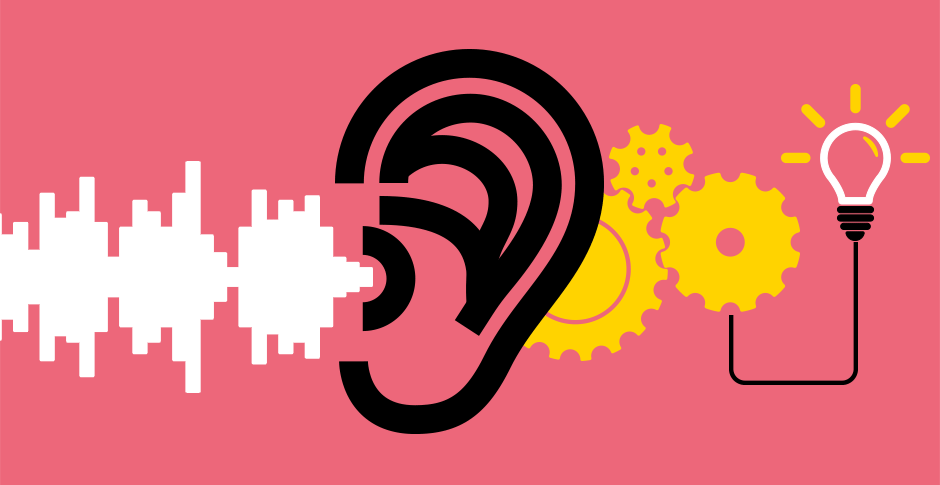“One of the most sincere forms of respect is actually listening to what another has to say.”
-Bryant H McGill
As counselors, listening intently is the first step towards understanding, assessing and guiding the client. They know that listening is not about understanding the words of the questions asked, but to understand why the question was asked in the first place. It shows a genuine desire to be with someone, which in turn both heals and builds trust in your client.
We are aware about the ‘healing’ ability of just talking to someone who listens without judgment. Even if they simply listen to you without providing a solution, you automatically feel better. This makes the characteristic of a ‘good listener’ all the more important for a counselor.
Good listening skills in counseling establishes trust, helps the client open up and disclose their thoughts, and encourages them to share their emotions, thereby facilitating the gathering of valuable information about the client that would in turn aid the counseling process.
During the initial stages of interaction with the client, the counselor encourages them to talk freely, without any filters, a process referred to as “exhaling”. The process of exhaling can offer multiple benefits, both to the client & the counselor.
- It allows the client to vent out pent up emotions to a person who is willingly listening to it. This in itself makes them feel a lot better
- It helps the client open up more easily & develop trust with the counselor
- Most importantly, the client often finds solutions to his/her own concerns through free talking, and also allows the counselor to get a deeper insight into the factors that might be leading to the problem
Besides exhaling, there are certain conditions that the counselor follows, in order to be a good listener and makes the client feel more comfortable to talk. These conditions that form the basis for good listening are: Congruence, Empathy & Unconditional Positive Regard.
Congruence refers to the honest relationship between a counselor’s inner feelings and their outer display. This involves being real, genuine and transparent, and not playing a role.
The acronym REDOL is kept in mind, which helps the counselor portray his/her inner attitudes and values of genuineness & respect towards a client.
R: The counselor is Relaxed, patient & natural with the client.
E: Counsellor makes good Eye Contact with a client which conveys the message that he/she is interested in what the client has to say. It also helps send across his/her point more effectively and helps build trust with the client.
D: The counselor Duly faces the client by eliminating any obstacle like desk which creates a psychological barrier for the client.
O: Open posture. The counselor ensures that his/her posture communicates openness and availability to the client. Crossed legs and crossed arms may be interpreted as devalued involvement with the client or even unavailability or remoteness.
L: The counselor leans toward the client, in a slight manner, to show interest and involvement. Leaning back from the client may convey the opposite.
Empathy: The counselor exercises Empathy, which refers to viewing the world through the perspective of the client, and accepting that clients perceptions and feelings as if they are they were your own without losing boundaries and separate sense of self.
The counselor carefully listens to the client, understanding what they mean to the best extent, and communicates this understanding to the client in such a way that they feel the counselor understands them to a great extent. This might help the clients understand themselves more fully and act on their understanding.
Empathy is all about understanding the world of the client by temporarily “stepping into their shoes”. It allows the counselor to recognize and acknowledge the feelings of another person. In the process of empathizing, the counselor temporarily forgets about his or her own frame of reference. The counselor then shares this understanding with the client in either a verbal or non-verbal manner
Unconditional Positive Regard involves a counselor offering a client full and caring attention without judgment or evaluation.
Unconditional Positive Regard refers to the ability of counselors to pick up on verbal & non-verbal cues sent by the client and to capture, understand and interpret these messages. This is done by offering a client full and caring attention without judgment or evaluation.
- Listening to and understanding the client’s verbal messages. When a client shares their thoughts, it usually comprises a mixture of experiences (what happened to them in the past), behaviors (what they did or failed to do), and effect (the emotions associated with the experiences). The counselor actively listens to the mix of experiences, behavior, and feelings, and meanwhile, also “hears” what the client is not saying.
- Listening to and interpreting the client’s nonverbal messages. Counsellors pick up on nonverbal messages such as bodily behaviour (posture, body movement and gestures), facial expressions (smiles, frowns, raised eyebrows, twisted lips), voice related behaviour (tone, pitch, voice level, intensity, inflection, spacing of words, emphases, pauses, silences and fluency), observable physiological responses (quickened breathing, blushing, paleness, pupil dilation), and general appearance (grooming and dress). Counselor “reads” these messages without distorting or over-interpreting them.
Listening is the most important skill required in the process of counseling. Once mastered, it creates a perception of honesty, integrity, and reliability in the client-counselor relationship, all of which contributes towards a strong working relationship.

